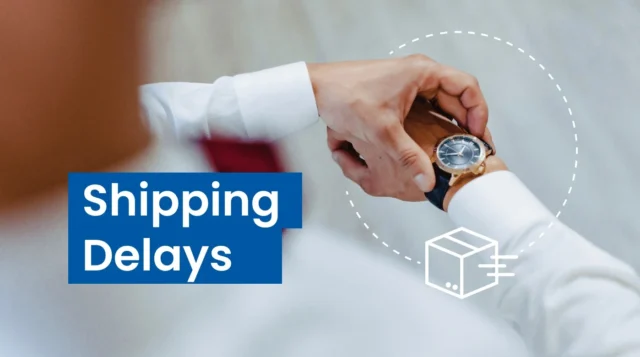
Delays happen. They are frustrating for everyone—businesses and customers alike. But every challenge is a chance to shine. With the right approach, businesses can transform a potential disaster into a moment of delight for their customers. Here’s how to make it work.
Key Points
- Keep communication proactive and clear.
- Offer real-time updates through effective tools.
- Provide compensations or perks to ease frustrations.
- Use delays as a chance to highlight customer care.
- Build loyalty by showing accountability and empathy.
Start With Transparency ─ Real-Time Tracking Builds Trust
Keeping customers informed is essential when orders face delays. Provide accurate updates using reliable tools. Platforms like shipping tracking Magento make it easier by offering real-time insights into delivery progress. This step shows your commitment to transparency.
Make Communication Proactive and Personal

Waiting for updates is frustrating. Don’t let customers reach out first—contact them with clear details about what’s happening. Use emails, SMS, or push notifications to explain the situation. Acknowledge the delay, provide a reason, and let them know what you are doing to resolve it.
For instance:
- Apologize clearly ─ “We’re sorry your package is late.”
- Share reasons briefly ─ “Unexpected weather slowed things down.”
- Provide solutions quickly ─ “We’ve ensured it’s on the next available route.”
Proactive communication shows you care and keeps frustrations from growing.
Use Delays to Show Exceptional Care
Every setback is an opportunity to stand out. Turn a late delivery into a memorable experience by going beyond expectations. Surprise customers with gestures like:
- Discount codes for future purchases.
- Free upgrades or expedited shipping next time.
- Small gifts as a token of appreciation.
Actions like these turn inconvenience into loyalty.
Strengthen Your Support System
Customer service teams should be ready to handle questions with empathy and efficiency. Equip them with the tools and authority to resolve issues quickly. Empowering your team ensures a seamless experience, even during problems.
What to focus on:
- Train representatives to acknowledge concerns immediately.
- Offer clear solutions, such as refunds or replacements, when necessary.
- Keep support accessible—don’t make customers wait for hours.
A robust support team makes all the difference when turning issues into positive outcomes.
Offer Visibility Every Step of the Way

When people don’t know where their packages are, anxiety grows. Reduce frustration by offering tools that provide clear tracking information. Regular updates reassure customers that their order hasn’t been forgotten.
Use platforms that allow customers to check delivery progress in real time. Offering transparency is a proactive way to ease concerns.
Incentivize Loyalty With Apologies
Saying sorry matters. Back it up with tangible gestures to show your sincerity. Offering discounts or freebies can soften the blow of a delay while incentivizing future purchases. For example:
- 10% off their next order.
- Complimentary gift-wrapping.
- Free shipping on the next purchase.
People remember businesses that go the extra mile during tough situations.
Turn Customer Feedback Into Growth Opportunities
A delay often leads to complaints. Instead of seeing this as negative, view it as a chance to improve. Gather feedback through surveys or direct conversations, then act on it.
Steps to follow:
- Ask what could have improved their experience.
- Analyze recurring issues—identify patterns.
- Implement changes to prevent similar problems.
Listening shows customers their voices matter.
Build a System That Prevents Future Issues

The best way to handle setbacks is to avoid them altogether. Evaluate your supply chain and logistics regularly. Look for gaps and inefficiencies that could cause problems.
Steps to build a resilient system:
- Partner with reliable delivery services.
- Use technology to forecast potential disruptions.
- Maintain a buffer stock for popular items.
Prevention saves both time and resources.
Empower Customers With Options
Giving customers control helps manage their expectations. Offer choices like expedited delivery, in-store pickup, or flexible delivery windows. When people feel in control, their frustration decreases, even during delays.
Options create a sense of partnership. They show that you value convenience for the customer.
Leverage Technology to Stay Ahead

Modern tools can make a huge difference when it comes to preventing or managing shipping challenges. Invest in platforms that integrate tracking, notifications, and customer communication into one streamlined system. This approach reduces miscommunication and allows you to respond faster.
For example:
- Automate updates so customers are never in the dark.
- Use AI-powered systems to predict disruptions and notify your team in advance.
- Implement dashboards that give your team visibility into logistics at every step.
Technology not only boosts efficiency but also shows customers you’re staying ahead of problems.
Stay Honest About Timelines
People value honesty over empty promises. If you know an order will take longer than expected, be upfront. Let customers know early, so they can adjust their expectations. Avoid making guarantees you can’t meet.
Being honest might not eliminate disappointment, but it builds trust. A customer who trusts you is more likely to return, even after a delay.
Educate Customers About Challenges

Sometimes delays are out of your control—storms, labor strikes, or unforeseen events happen. Sharing insights about what’s happening can create empathy. Explain why the issue occurred and what steps you’re taking to address it.
An example message:
- “Severe weather has impacted delivery routes, but we’re working hard to minimize the delay. Thank you for your understanding.”
Providing context helps customers feel included in the process rather than left out.
Recognize the Value of Human Connection
Even with all the tech in the world, human interaction matters most. Train your team to interact with empathy, patience, and problem-solving skills. When a customer knows there’s someone listening, frustration reduces.
Key tips for meaningful customer interactions:
- Never interrupt—let them explain their concern fully.
- Respond with a solution, not excuses.
- Use positive language to reinforce your commitment to resolving the issue.
Human connection is what leaves the most lasting impression.
Don’t Be Afraid to Apologize

A simple apology can go a long way. Taking responsibility is a sign of accountability, not weakness. When you admit a mistake, customers appreciate the honesty and are more willing to forgive.
An effective apology:
- Acknowledges the issue.
- Offers a clear explanation.
- Ends with a solution or gesture of goodwill.
Saying sorry with sincerity builds credibility.
Learn From Success Stories
Take inspiration from brands that excel during challenges. Many companies have turned logistical issues into moments of customer delight through creative solutions. Look at how major retailers handle disruptions and adapt their strategies to suit your business.
Ask yourself:
- How do they communicate during delays?
- What incentives do they offer to soften the impact?
- What processes do they use to recover quickly?
Analyzing success stories can provide actionable insights you can apply to your business.
Reward Loyal Customers for Their Patience
Delays provide an opportunity to thank customers for sticking with you. Turn a negative into a positive by rewarding loyalty. This could include:
- Early access to new products.
- Exclusive membership perks.
- Invitations to VIP sales events.
Acknowledging their patience shows that you value their continued trust in your business.
End Every Interaction With Reassurance
The way a situation ends leaves the biggest impression. After addressing the delay, make sure the customer feels valued. Reiterate your commitment to improving their experience.
For example:
- “We’re sorry for the inconvenience and thank you for your patience.”
- “We appreciate your understanding and look forward to serving you better.”
A warm conclusion can mend even the most challenging situations.
Final Thought
Shipping setbacks are inevitable, but the way you handle them defines your reputation. By turning delays into moments of proactive care, you not only retain customers but also build lasting loyalty. Challenges become opportunities when met with empathy, honesty, and action. The next time something doesn’t go as planned, see it as your chance to shine.










